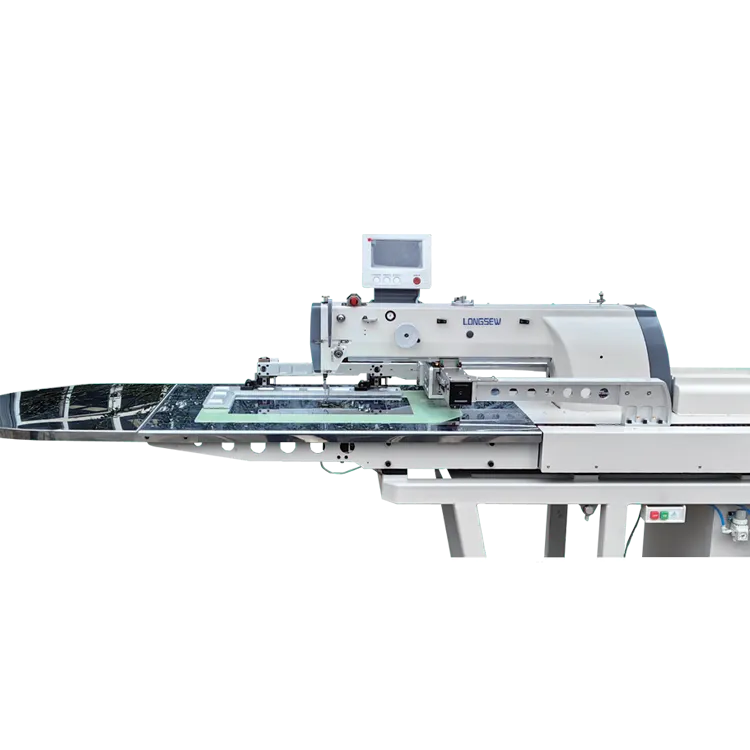Exploring the Benefits and Applications of CNC Technology in Machine Sewing Processes
The Evolution and Benefits of CNC Machine Sewing
In the world of manufacturing and textile production, CNC (Computer Numerical Control) machine sewing has emerged as a revolutionary technology that enhances precision, efficiency, and creativity. The integration of computer technology into sewing machinery has transformed traditional sewing processes, making them faster and more accurate than ever before. This article explores the evolution of CNC machine sewing, its benefits, and its implications for the future of the textile industry.
Evolution of CNC Machine Sewing
The origins of CNC technology can be traced back to the 1940s and 1950s, when engineers began experimenting with automated machine tools. However, it wasn't until the 1980s and 1990s that CNC technology made its way into the sewing industry. The initial machines were bulky and limited in functionality, but as technology progressed, they became more compact and versatile.
Modern CNC sewing machines are equipped with advanced computer systems that allow for intricate designs and patterns to be programmed directly into the machine. This has enabled manufacturers to produce complex garments and textiles with relative ease. For instance, a designer can create a unique embroidery pattern on a garment by simply inputting the design into the CNC software, which then guides the machine to stitch it out accurately.
Benefits of CNC Machine Sewing
1. Precision and Consistency One of the most significant advantages of CNC machine sewing is its unmatched precision. Unlike manual sewing, where human error is a constant risk, CNC machines operate on programmed instructions. This ensures that every stitch is uniform, which is particularly critical for high-quality textile production.
2. Increased Efficiency CNC machines operate at a faster pace compared to traditional sewing methods. They can complete repetitive tasks in a fraction of the time it would take a human, allowing for higher production rates. This efficiency is crucial in a competitive market where speed to market can provide a significant advantage.
cnc machine sewing

3. Customization CNC sewing technology allows for easy customization of designs. Whether it’s for a small batch of unique clothing items or large-scale production runs, CNC machines can quickly adapt to various designs without the need for extensive retooling. This capability is especially beneficial for businesses that prioritize individualized products.
4. Reduction in Labor Costs While the initial investment in CNC sewing machines can be high, they can ultimately lead to reduced labor costs. With machines performing the majority of sewing tasks, businesses can save on labor expenses and allocate human resources to more complex or creative tasks that machines cannot handle.
5. Minimized Material Waste CNC technology optimizes fabric usage by calculating the most efficient cutting patterns, thereby reducing waste. This sustainability aspect is crucial as the industry seeks to become more environmentally friendly.
Future Implications
As CNC technology continues to evolve, we can expect even more innovations in machine sewing. The introduction of artificial intelligence (AI) and machine learning could lead to smarter machines that learn from previous tasks, improving accuracy and efficiency over time.
Additionally, the trend towards automation in various industries suggests that CNC machine sewing may become a standard practice in textile manufacturing. As costs decrease and technology becomes more accessible, smaller businesses will also benefit from CNC capabilities.
In conclusion, CNC machine sewing represents a significant advancement in the textile industry, providing numerous benefits ranging from enhanced precision to increased efficiency and sustainability. As this technology evolves, it holds the potential to reshape the landscape of garment production, making it an exciting time for manufacturers and designers alike. The future of sewing is not just about threads and fabrics but also about the integration of technology that can create a smarter, more efficient production process.
-
Leather Sewing Machine: The Industrial Standard for Tough MaterialsNewsJul.18,2025
-
Sail Making Machine: Heavy-Duty Stitching for Industrial and Marine NeedsNewsJul.18,2025
-
Sling Sewing Machine: The Backbone of Heavy-Duty FabricationNewsJul.18,2025
-
Leather Sewing Machine: Precision for Heavy-Duty StitchingNewsJul.18,2025
-
Big Bag Sewing Machine: Powering the Future of Bulk PackagingNewsJul.18,2025
-
FIBC Sewing Machine: Essential Equipment for Bulk Bag ProductionNewsJul.18,2025
-
Heavy Duty Leather Sewing Machine: A Must-Have for Professional LeatherworkNewsMay.28,2025





























